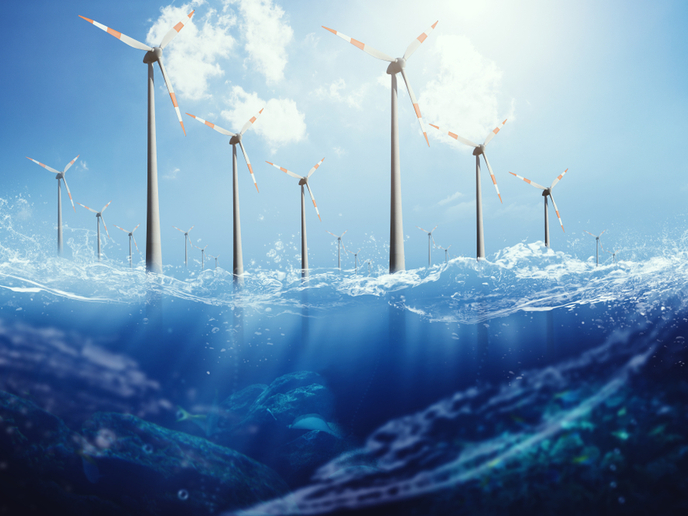Overcoming rough seas hurdle in offshore wind farm maintenance
Offshore wind turbines operate more efficiently than wind turbines on land, but rough seas can hinder their maintenance. In such conditions, crews can’t safely transfer from a support vessel to a turbine platform either by walkway or from the air. However, bad weather isn’t a limiting factor when maintenance is carried out using robotics, and this is precisely what the EU-funded ATLANTIS project is promoting. To reduce energy costs, the project is investigating the use of robotics as a way to conduct remote inspections and maintenance at offshore wind farms. It’s also exploring ways to optimise wind farm vessel uptime. Now, a desk study conducted by global technology leader and ATLANTIS project partner ABB has shown that combining its ABB Ability™ Marine Advisory System – OCTOPUS and robotics maintenance could increase wind farm vessel working hours by more than a third. The ABB study focused on the ATLANTIS large-scale offshore test site in the Atlantic Ocean, off the coast of Viana do Castelo in Portugal. Using data from this site, it worked out to what extent vessels using robotics rather than human crews for wind turbine maintenance can help increase operating hours. “Accurate advice prevents costly last-minute cancellations in challenging but acceptable weather conditions, also providing clarity in situations where vessels can be idle in port when they should be working on site,” stated Antto Shemeikka of ABB Marine & Ports in a news item posted on the ‘Hellenic Shipping News Worldwide’ website. “Planning precision also means that the OCTOPUS system helps reduce unnecessary fuel costs.”
Robotics-based benefits in numbers
The OCTOPUS software makes it possible to plan operations using safety limits based on wave conditions, as well as on acceptable vessel responses. According to calculations based on the test site data, wave heights are on average below safety limits 34 % of the time. Whereas acceptable wave heights are 1.5 m when transferring personnel from support vessels to wind turbine platforms, the study showed that robotics-based maintenance solutions could improve the safety margin and increase operational wave heights to 2 m. This would help vessels operate safely 46 % of the time, raising potential working hours by 35 %. “For windfarm vessel owners and charterers, the opportunities which smart decision support technology creates for increased uptime are truly exciting,” remarked Andry Maykol Pinto, senior researcher at the Institute for Systems and Computer Engineering, Technology and Science (Portugal), and project coordinator of ATLANTIS. “We firmly believe that remote solutions will play a greater role in vessel operations in the future, with smart decision support systems such as our OCTOPUS suite of products increasing efficiency without any compromise on safety.” ATLANTIS (The Atlantic Testing Platform for Maritime Robotics: New Frontiers for Inspection and Maintenance of Offshore Energy Infrastructures.) aims to speed up the adoption of robotics-based solutions by demonstrating how robotics can make operations and maintenance activities safer and more efficient. The 3-year project ends in December 2022. For more information, please see: ATLANTIS project website
Keywords
ATLANTIS, wind farm, wind turbine, vessel, robotics, offshore, operations and maintenance



